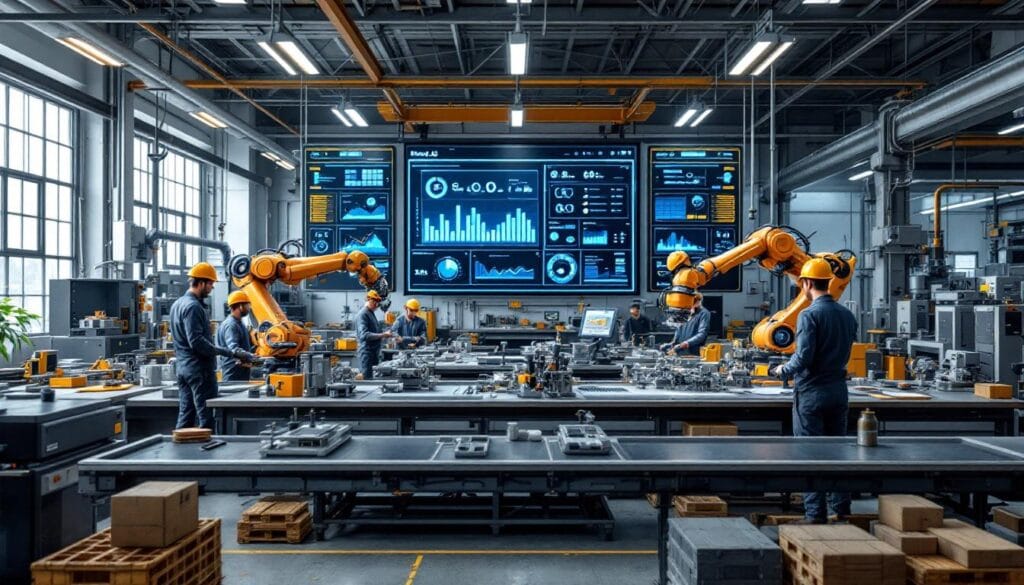The global market for Industry 4.0 is undergoing significant changes, driven by the rapid integration of technologies such as artificial intelligence, the Internet of Things, and automation. These innovations are radically transforming manufacturing operations, optimizing processes and reducing operational costs. The growing adoption of connected solutions is redefining the industrial landscape, with notable growth expected until 2032. Massive investments in d digitalization and automated tools are fueling this dynamic, paving the way for new opportunities for industrial excellence and economic growth.

Table des matières
ToggleMovement towards Industry 4.0: a global transformation
The advent of Industry 4.0 marks a promising new stage in the global industrial production. With technologies like Artificial Intelligence, Internet of Things, and 5G connectivity, the market is expected to reach an impressive value of $298.54 billion by 2032. Ongoing efforts to automate processes and reduce operational costs accelerate this transition, with companies seeking to leverage these innovations to transform their production lines.
Driving elements and key market segments
The main driver of this growth lies in the imperative to improve operational efficiency and productivity. Companies are massively adopting AI and IoT to optimize their production operations, anticipate equipment maintenance, and ensure real-time quality control. Enabling technologies also include augmented reality and virtual reality, providing powerful tools for training and maintenance. By segmenting the market, we observe significant adoption in the manufacturing, automotive, and energy sectors, all of which benefit from the implementation of intelligent solutions.
Countries leading the adoption of Industry 4.0
Globally, countries such as the United States, Germany, and China are at the forefront of integrating Industry 4.0 technologies. In the United States, investment in advanced manufacturing technologies is increasing, while in Germany, a solid engineering base and government programs are driving digital transformation. China, for its part, is focusing on policies promoting automation and relies on its significant investments in smart manufacturing to enhance its competitiveness. This race for innovation and the adoption of new technologies by global leaders sets an inspiring precedent for other nations eager to follow suit.




